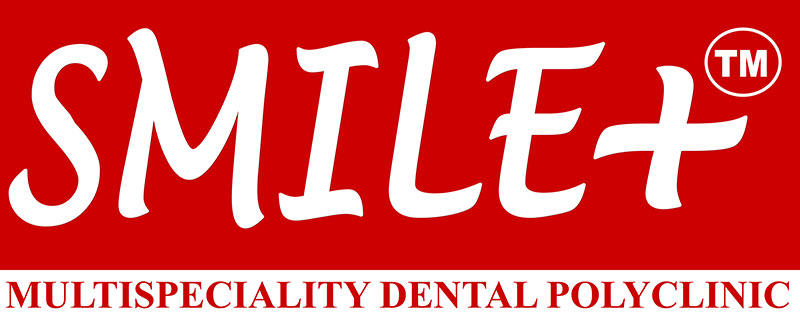
CONSULTATION
Among all dental services and dental care services, dental consultation aids you in finding the right dental practice and services to meet your needs and expectations. During a consultation, our dentists can tell you more about the high-quality dental services and advanced and latest technology we offer. We also offer our patients zero consultation scheme to avail your dental requirements at affordable prices.
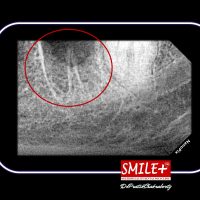
EXTRACTION
A dental extraction is one of the oldest and most effective dental treatment or Tooth treatment. Sometimes, there is too much damage present in a tooth for it to be repaired. In this case, the tooth is required to be extracted or removed. A loose tooth will also require extraction if it can’t be saved, even with bone replacement surgery (bone graft). The doctor removes the tooth in toto after giving local anesthesia. This is a widely practiced Dental Service offered to our patients.

RESTORATION GIC
The Dental Treatment in which a material is placed in the cavity of a tooth to restore its form and function is called Restoration. Chemically, it combines fluoro-aluminosilicate glass powder and polyacrylic acid liquid. There are varieties of GIC available now-a-days like Self-cure GIC ,Light cured GIC or Resin-Modified glass ionomer cement (RMGIC).

RESTORATION LC
Light Cure Composite Restorations in dental services are new options that have opened a new avenue. They are made from powdered silica, glass quartz, or other ceramic particles added to the base of resin. After mild tooth preparation, etching and bonding steps are done followed by curing. After that, composite restorative materials are placed and cured again to achieve the desirable strength.

RESTORATION TEMP./ IRM
Temporary dental restorations in dental treatment are just what they sound like – temporary! They are not meant to be a permanent solution but a stop-gap measure until a more permanent restoration can be placed. Your dentist will select the best material based on your dental treatment plan and how long you must wear them. Intermediate filling procedures are specially used in multiple sitting RCTs.

CUSPAL GRINDING
Teeth are altered by selective grinding to prevent cheek biting or any impingement and to lessen the stress on the periodontal structures. It can be done easily without any prophylactic antibiotics or local anesthesia.

WISDOM TOOTH REMOVAL/ IMPACTION
Third, molars at the rear of the mouth that don't have adequate space to erupt or grow normally are impacted wisdom teeth. It can lead to multiple oral health problems, including infection, tooth decay, and gum disease. Surgical removal is often recommended as the only dental treatment option to eradicate this recurrent nagging tooth problem. This dental service can be done with the help of soft tissue LASER for more convenience to the patient.

SCALING & SRP
Dental scaling is a type of Dental Cleaning that uses scaler tip to reach plaque and tartar and plaque below the gum line. A dentist recommends periodontal scaling and root planning when you have signs of periodontal disease, especially when the symptoms are chronic. This dental care service considerably improves oral health and reduces the chances of foul smell and gum bleeding from the mouth.
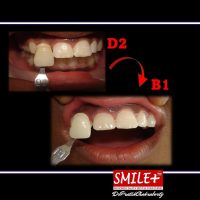
BLEACHING/ WHITENING
Teeth whitening is a cosmetic procedure of dental cleaning recommended for patients with stained or discolored teeth. When it comes to teeth whitening, you've got two options: in-office-based teeth bleaching or home bleaching. Both teeth whitening options contain peroxide-based bleaching agents.

RPD (Removable Partial Denture)
RPD is a dental treatment for remitting missing teeth and surrounding tissues. A removable partial denture comprises replaced teeth attached to a gum-colored or pink acrylic or metal base, often linked to a metal framework that holds the denture in the mouth. It is used when one or more teeth remain in the upper or lower jaw. New dentures may feel odd or loose for days until the tongue and cheek muscles learn to keep them in place and you get comfortable removing and inserting them.
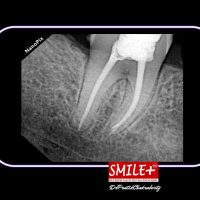
RCT (Root Canal Treatment)
ROOT CANAL TREATMENT -alternative dental treatment of extraction. It is done to save a tooth. A Root Canal Treatment (RCT) is a dental service where the infected pulp tissue is extirpated, the root canals are cleaned off any remaining debris, and then filled with Gutta Percha to achieve an airtight apical seal. This Dental Care service is designed to remove bacteria from the infected root canal, help avoid reinfection, and save the natural tooth. It is an alternative to tooth removal. A CROWN is placed on the tooth that is treated.

FPD(Fixed Teeth Replacement) / DENTAL BRIDGE
A DENTAL BRIDGE is a kind of dental treatment used to close the gap between teeth for various reasons. This tooth treatment replaces the missing tooth/teeth. The four primary types of dental bridges include TRADITIONAL BRIDGE, consisting of caps on both ends with pontics (artificial teeth) in between. CANTILEVER BRIDGE - only a crown on one end. MARYLAND BRIDGE - A resin-bonded bridge uses metal wings instead of crowns to secure your bridge. IMPLANT-SUPPORTED BRIDGE rests on top of dental implants instead of natural teeth.

CROWN – PFM/MCR
Porcelain-fused-to-metal (PFM) crowns in dental treatment blend the natural look of porcelain and durability. Dentists can match these crowns to the shade of your teeth. Despite their strength, PFM crowns have some drawbacks. For example, the porcelain coating may chip off over long time usage, exposing the metal underneath Despite all ,this dental service is most popular due to its cost-effectiveness and high longevity.

CROWN – ZIRCONIA/ALL-CERAMIC
All ceramic or porcelain crowns in dental care services mimic the appearance of tooth enamel more than any other crown type. They’re also a good choice if you have metal allergies. Lab technicians use many materials to make ceramic crowns, but zirconium dioxide is one of the most popular. Zirconia crowns are extremely durable and withstand heavier forces than other ceramic crowns. They’re also gentle on your opposing teeth, resulting in less enamel wear.

POST-CORE
A post & core build-up in dental treatment is a bridge between a tooth, a root canal and a crown. It is generally performed on a tooth before placing a crown on it and after a root canal. Although not all root-canal treated teeth need posts & cores, many do. Customized posts are made with precious, semiprecious metals or other alloys (mainly chromium – cobalt). Prefabricated posts and core are made of all ceramic, metals or Gold.
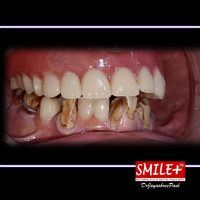
CD (Complete Denture)
A conventional denture is placed 8 to 12 weeks after removing the teeth. Immediate dentures are placed just after the teeth removal. As a result, the wearer does not have to be without teeth during the healing period. This dental care service of fabricating dentures takes a few weeks and several appointments—a series of impressions of your jaw, models, wax forms, try-in dentures, and final dentures.

IMPLANT
Osseointegration is a biological process that is the basis for modern dental implants. Materials such as zirconia or titanium form an intimate bond to the bone. The implant is primarily placed into the empty socket to osseointegrate with the bone, and then a dental prosthetic part- Crown, is added. The success of implants depends on the health and thickness of the bone and gingival tissues surrounding the implant, the person's health, co-morbidities, oral health maintenance, etc. It can be considered the most advanced dental treatment.

MINOR ORAL SURGERY
Minor oral surgery in dental services includes removing retained or buried roots, broken teeth, wisdom teeth, and upper and lower jaw cysts . It also includes the removal of small soft tissue lesions in the mouth, such as mucocele, ranula, high labial or lingual frenum, etc, and apical surgery. These operations have a brief recovery period and are performed under local anesthetic with or without IV sedation.

ORTHODONTIC TREATMENT
Orthodontic Treatment is correcting mal-aligned teeth with removable or fixed appliances. Orthodontics is a dental specialty that aligns your bite and straightens your teeth. You might need to see an orthodontist if you have twisted, overlapped, crooked, or gapped teeth. Common orthodontic treatments include removable retainers, traditional braces, and clear aligners.

ALIGNER
Clear Aligners are newly developed orthodontic treatment options. They are transparent trays made of special material that straighten teeth like braces. They use constant and gentle force to move the teeth in the required position without the hassles of metal wires and brackets. They are custom-made for each patient through a digital scan. The patient must strictly wear these trays for the advised duration to get the desired results.

METAL BRACES
In this Orthodontic Treatment, metal braces correct space between teeth, crowded teeth, and mal-aligned teeth. The most suitable time for braces to be placed is between 10 and 14 years of age when the head and mouth are still growing, and teeth respond better to straightening. Braces are not merely for kids. Many adults also wear braces to correct minor problems and improve their smiles.

CERAMIC BRACES
Ceramic braces are an aesthetic but effective orthodontic treatment. They have eradicated the social stigma of orthodontic treatment. They blend with the teeth as white and provide a very good aesthetic solution to correct orthodontic problems in all situations. If used with ceramic wires, their effectiveness increases and a more harmonious result can be achieved. They are more aesthetic options than conventional Orthodontic Treatment.

X-RAY/RVG
A radiological method is used in dental care services to see the teeth and bone. Film, sensor, or plate forms are placed inside or outside the mouth. RVG (RadioVisioGraphy) has revolutionized diagnosis—very low doses of X-rays are used, and accuracy is better. It is the most commonly used imaging system today. RVG stands for RadioVisioGraphy, digital X-ray. This system is considered one of the best advances in dentistry.

DENTAL LASER
Lasers are used in dental treatment to remove bacteria and reshape gums during root canal procedures, biopsy, or lesion removal. Lasers are safe, accurate, and effective and benefit the patient. Increased accuracy of the laser energy means less gum tissue and natural pieces of the tooth need to be removed to accomplish the surgery goal.

SELF-LIGATING BRACES
This kind of brace has a self-bonding property with teeth; thus, in this orthodontic treatment, the chances of accidental bracket removal are very low, which, on the other hand, gives a more assured prognosis in less time. It also reduces the number of treatment appointments and improves patient comfort.

BIOPSY
BIOPSY does not mean cancer; it’s a kind of dental service in which the lesion (outgrowth) may be excised in toto or partially, depending on the doctor’s advice. The sample is then sent for histopathological evaluation under a microscope. This is performed under strict supervision under local anesthesia. After the lesion has been diagnosed, it is then treated accordingly.

RESTORATION SDR
SDR stands for Smart Dentin Replacement. These relatively newer progenies were invented to simulate the dentin structure of the tooth. Consequently, they are the more advanced options than other restorations. Restoration or filling with SDR can provide biocompatibility, aesthetics, and compressive strength to ensure a long-lasting and good looking filling.

ZYGOMATIC IMPLANTS
Zygomatic implants are a type of dental implants which are used in patients with bone loss in upper jaw. Their upper jawbone are not good candidates to support a dental implant due to insufficient bone, atrophy or any defects. Hence the implant is placed in the cheek bone (zygoma) from which it derives its support and name

ALL-ON-4 IMPLANT-SUPPORTED DENTURE
It is full arch rehabilitation done with 4 Implants. The implants are placed surgically within the jaw bones with correct angulation, positioning and emergence. Upon those implants the denture is fixed. This treatment provides a fruitful alternative to conventional removable dentures.
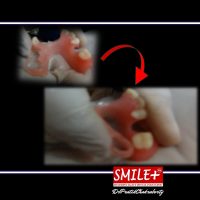
VALPLAST FLEXIBLE DENTURE
Valplast Dentures is Thermoplast dentures. Essentially, the thermoplastic nylon resin that is used in the construction of a Valplast denture is thinner, longer lasting, and more flexible than metal or acrylic dentures. It is more affordable than Fixed partial denture and more aesthetic than conventional Removable denture.
Smile without any Hesitations by Availing Yourself of Our Dental Treatment in Belgharia and Barrackpore
Dental issues should never be ignored. If you’re making such a mistake; don’t do so. Contact Smile PlusClinic on an immediate basis, and get the best dental services in Belgharia and Barrackpore. We are not limited to providing you with dental treatments, but we also offer our patients Orthodontic treatment in barrackpore and dental cleaning services in Barrackpore and Belgharia. During our orthodontic treatment, we help our patients correct the mal-aligned teeth and align them through different fixed or removable appliances. Our Orthodontic treatments include traditional braces, removable retainers, and clear aligners. We also offer dental cleaning services to our patients. Our dental cleaning procedures include teeth whitening or bleaching. Our home bleaching and office-based teeth bleaching work the best to give our patients whiter teeth and a beautiful smile.
Stay Relaxed with Our Affordable Dental Services in Barrackpore and Belgharia
We value your pocket and aim to provide premium and affordable dental treatment in Belgharia. With a range of dental services near Belgharia and Barrackpore at our clinic, we never compromise on the quality of our services. Our experienced dentists perform proper procedures for every dental service and help our patients with strong and healthy teeth. We never leave any stone unturned when it comes to offering the best dental services to our patients. In case of emergencies, we take immediate action to heal the dental issues and make our patient stay free from pain and bleeding. If you want to experience our dental services, do contact us and get budget-friendly services now!
